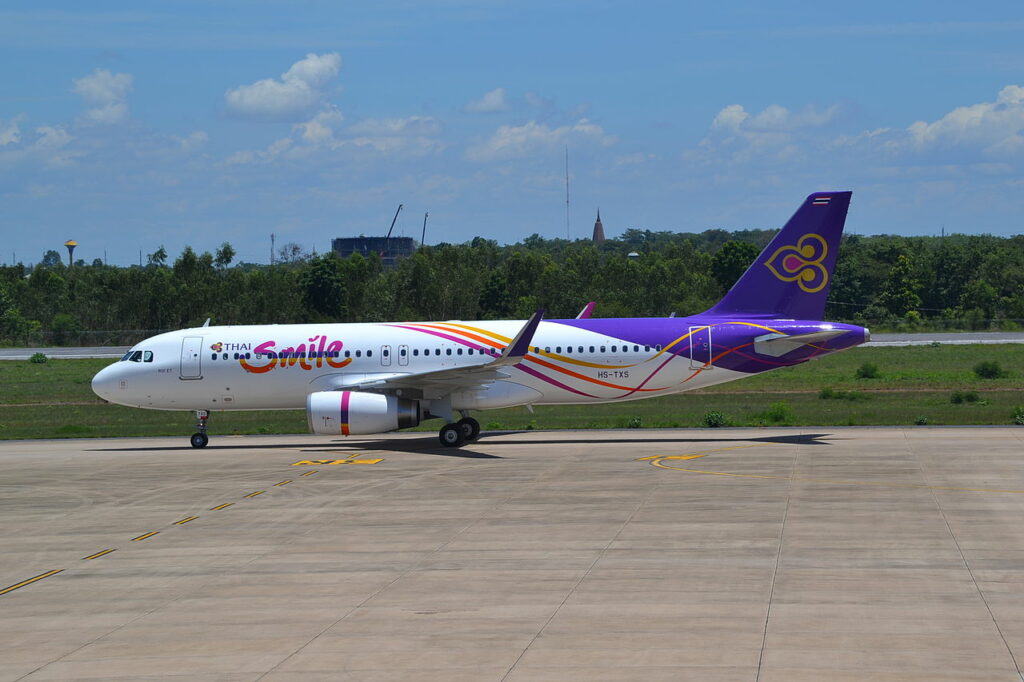In the first quarter of 2023, Thai Airways International Public Company Limited (THAI) and its subsidiaries recorded a total revenue of 41,507 million baht or nearly $1.2 billion USD.
This figure is markedly higher than the same period last year, which stood at 271% lower than this year’s figure, at 11,181 million baht or $330 million USD.
Growth trajectory
The impressive figure reflects the aggressive rise in passenger numbers, and the resumptions of flight services to China, Europe, and East Asia.
Routes to Japan and South Korea are one of the airline’s most profitable routes, as these two countries are popular amongst Thai nationals for leisure visits.
[monsterinsights_popular_posts_inline]
The airline also struck gold when it resumed regular flights to China on 1 March 2023, which allowed for significant and aggressive revenue growth.
In spite of this, flights to China have not yet reached pre-Covid capacity, due to the lack of aircraft THAI has in its inventory. The airline also furthered that its cabin factors for European, Australian, and Japanese were relatively high.
Higher expenses
The carrier and its subsidiaries recorded a total expense of 28,473 million baht or $842 million USD for the quarter. This is higher than the previous year, at 14,348 million baht or $424 million baht which is expected due to the costs related to inducting staff and re-activating parked aircraft.
Moreover, the fuel price has taken up a large proportion of the variable costs, which is reported to be 9.7% higher than last year.
THAI and subsidiaries
The subsidiaries of the Thai flag carrier reported an operating profit before finance costs and excluding one-time transactions at 13,034 million baht or $386 million USD.
This is a significant improvement from last year in the same quarter (Q1/2022) reported an operating loss at 3,167 million baht or $93 million USD.
Moreover, the subsidiaries financial costs stood at 3,549 million baht or $105 million USD. In addition, THAI and its sister companies had one-time items, due to gains on debt restructuring and foreign exchange rates with profits of sale on its assets totalling a revenue of 2,987 million baht.
Respectively THAI and its subsidiaries recorded a net profit of 12,523 million baht, a far cry from last year’s figure of a net loss of 3,243 million baht.
THAI’s profit attributable to the parent company stood at 12,514 million baht. Moreover, earnings before interest, tax depreciation, and amortization or EBITDA for shore after cash paid for aircraft lease payment; which includes power-by-the-hour totalling 14,054 million Thai baht.
The THAI Smile Factor
THAI Smile is the regional arm of THAI using 20 Airbus A320s. The regional subsidiary has been bleeding money ever since its establishment over a decade ago.
THAI Smile Airways, operating loss excluding one-time transactions, stood at 172 million baht. At the end of this year, the airline’s management team has decided to pull the plug on its regional arm due to accumulating losses, and all narrowbody A320s will be transferred to its mainline THAI Airways.

Operational statistics
As of 31st March 2023, the Thai flag carrier and THAI Smile Airways have a total of 65 active aircraft in their fleet today, a massive deduction of over 100 pre-Covid times.
The airline has an average aircraft utilization of 12.3 hours per day, with an ASK or traffic production increasing by 121.4%.
Passenger traffic or RPK increasing by 469.2% affecting an average cabin factor of 83.5%, which is higher than 2022 of 32.5%.
Furthermore, the number of passengers carried stood at 3.52 million, which is an increase of 245.1%
Conclusion
THAI’s evolving financial situation has been positive due to debt restructuring, streamlining of operations, including fleet size and type reductions the reopening of China, and a gradual economic recovery.
The dissolution of THAI Smile Airways later this year is a by-product of debt restructuring; hoping to streamline the Thai carrier in the future years ahead.
The airline is also feeling the capacity crunch, where it does not have enough aircraft to increase its frequencies. Recently the airline announced that it has ordered 11 more A350s to the additional 12 they have in the fleet.









